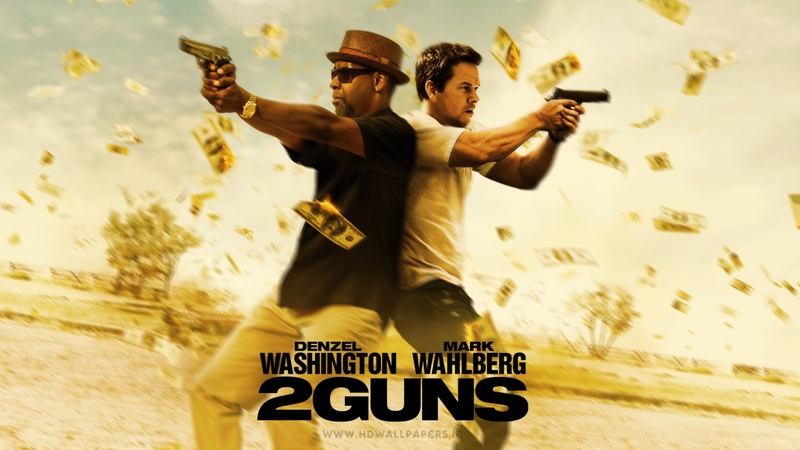Firearms are a necessary component of many well-loved film genres. Making a crime film without guns is tricky at best, and action films are pretty much required to have at least one good shoot-out sequence.
Audiences expect these scenes, and they can be some of the most exciting sequences for a filmmaker to shoot (no pun intended). Needless to say however, they can also be immensely dangerous to film, and there are plenty of practical considerations to consider before you bring a gun onto your set.
Today we’ll be looking at not only the practicalities of working with firearms on set, but also how to make sure they look fantastic in the end product.
Gun Safety for Directors
Guns are dangerous. This may sound patronizingly obvious, but it cannot be understated. They’re one of the few things on earth designed with the single purpose of killing things quickly and efficiently, and gun owners know to treat them with respect because of it – even if you have little experience with gun ownership, as a director with a duty of care towards your crew, you should carry the same respect and reverence towards gun control on set.
In general, there are four basic rules to gun safety:
− Treat every firearm like it’s loaded, even if you know it’s not
− Don’t point a gun at anything you don’t intend to kill
− Keep your finger off the trigger until the target is in your sights
− Be sure of both your target and whatever might be behind it
Of course, these safety rules are written with gun owners in mind. When you’re directing a film, following these rules becomes more challenging. You are, after all, trying to create a realistic story, and that sometimes requires your actors to point weapons at people and, in the case of firing blanks, even shoot them from time to time. There are a few ways you can reduce your chances of injuries on the set, though, without sacrificing your story:
− Film any shootings in two takes rather than a single take of the shot. In other words, show the shooter aiming and pulling the trigger, then the victim reacting. This allows you to have your actor shooting at a target. As the death of Brandon Lee proved, you can’t always count on blanks to be safe; aiming at a target and editing it together will avoid this risk.
− Avoid using real guns altogether. Train your actors to handle the rubber replicas in a believable fashion, and just animate in the muzzle flash as necessary. It worked for Once Upon a Time in Mexico, and if you do it well, your audience will never know the difference.
− Use sound and lighting to simulate gunfire without ever needing to show the shot on-screen. You can also get artistic with silhouettes or other effects that will let the viewer know what’s going on without actually needing to show every detail.

− Instead of using squibs, which can cause injuries, opt for a safer effect by placing a syringe and catheter filled with fake blood under the clothes of the actor playing the victim. By taping the catheter into place, you can ensure that the “wound” will appear in the right place.
These are just a few tips that might help you keep your cast and crew safe. Most good film schools such as the New York Film Academy (www.nyfa.edu) include safety training as standard within their programs, but formal gun training is something you may need to seek outside of your studies or existing filmmaking career.
In lieu of any personal expertise, an alternative is to hire a freelance gun expert if you do choose to keep real guns on your set for any reason. Naturally, it’s well worth the expense to hire a professional consultant rather than risk anybody’s life during your film, and in some states this is even a mandatory requirement (often falling under the same laws governing pyrotechnics when working with things like squibs and other flash-bang effects).
Treating Your Audience to a Believable Firefight
Most people aren’t in contact with guns on a regular basis, which means that for many viewers, their only knowledge of firearms comes from watching movies. This can be a problem when filmmakers start basing their gun sequences off of things they’ve seen in other films rather than doing research themselves. Pretty soon, the result is a body of film that makes some of the same mistakes over and over. If you want to avoid having gun owners (and even general viewers) wince at your firearm sequences and lose all willing suspension of disbelief, keep these things in mind:
− Guns are loud. It’s common to wear ear protection while at a shooting range, and having a gun fired next to you is like having a firecracker blow up by your ear. If you have a shoot-out scene or someone practicing without any ear protection, expect the characters involved to have some temporary hearing loss as a result.*

− Along these same lines, it’s pretty common for people to flinch when firing a gun, unless they’re experts with a lot of practice. If you need to sell a character as being a seasoned expert, it pays to coach the actor on how to shoot without flinching.
− Body armor doesn’t protect you from 100% of the impact. It just slows down the bullet, preventing it from burrowing through your flesh. The bullet’s inertia still hits you full-on, which means that a character wearing a bullet-proof best can and should still be sent off-balance or spun around by a gunshot. At close enough ranges, it’ll be enough force to knock the wind out of him and possibly floor him.
− That said, a bullet is not going to throw the victim backwards, not even a close-range shotgun blast. The victim might be knocked over, but he won’t go flying. If the bullet has that much extra inertia, it will keep traveling through the victim and find another place to land.
− Whenever you have a character threatening another with a gun, resist the urge to have him rack the slide for emphasis. In reality, all this would do is clear the bullet from the chamber, uselessly. Unless you’re filming an era with dual-action pistols, skip this scene. If you really want to have a menacing gun-sound made to threaten a character, have the shooter load up at 12-gauge shotgun and cock it into place instead.

These are just a few of the many things that can throw a gun-savvy audience out of the moment. Of course, there a plenty of scripts which can be undermined by dogmatically sticking to realism, but if your movie calls for – or could benefit from – an added accuracy to fire fights, the best way to keep your movie engaging and realistic is to do plenty of research and consult an expert as necessary.
The end result will be well worth it.
* Silencers don’t make a gun sound how you think they sound!











This is a very informative piece by the NY Film Academy!
Sterling advice. Now all is left for me is go to the NY Film Academy for real. Who knows what tomorrow might bring???
Yes, definitely the best way to keep a moving engaging is research! And may I say again, research! That much added accuracy is what really separates a realistic movie from a amateur one.
This is brilliant tutelage by the New York Film Academy.
This is great. What help! Thanks.
Guns have become an integral part of films (our society) these days that doing it well in film has become very important. If it’s done well, we appreciate a movie but if it’s not done to the required taste, and the barrier here has been set high, it leaves quite a bad taste in your mouth. I can’t tell you how many movies I have stopped watching as a result of this.
I thought this was an awesome tutoring by the NY Film Academy. I definitely would love to see more of such lessons on various aspects of the film business. Thanks for sharing as well.